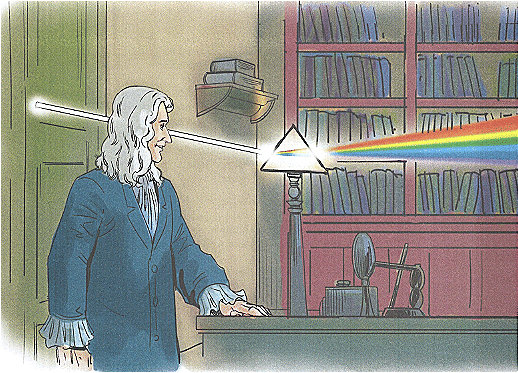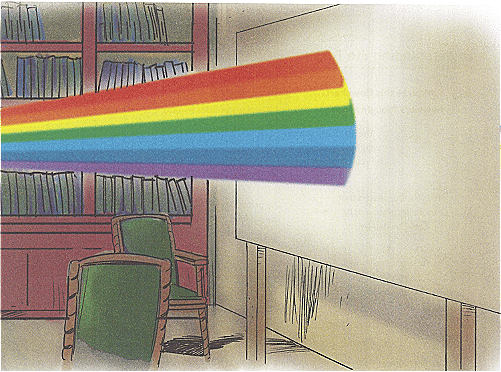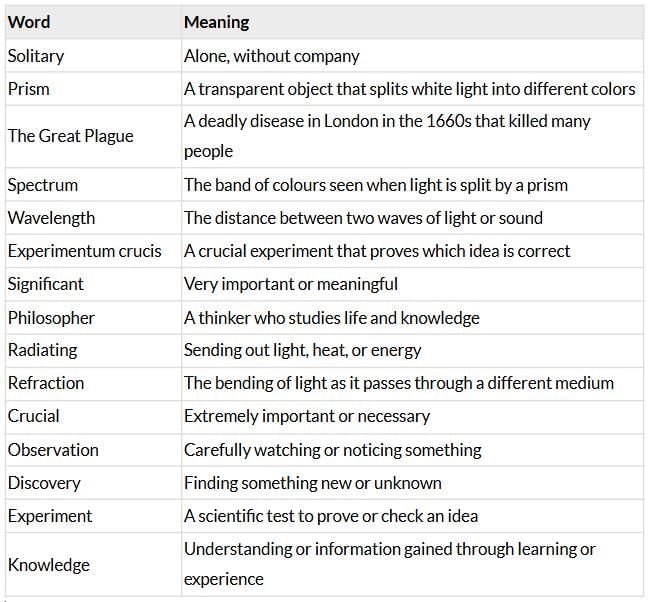About the Author
Kathleen Krull was an American author known for writing lively and engaging children’s books. She worked as a children’s book editor before becoming a full-time writer. Some of her best-known works include the Lives of series, where she shared fascinating stories about famous people in history.
Detailed Summary
The story To Truly Understand describes the early scientific discoveries of Isaac Newton, long before he became world-famous. In the 1660s, the Great Plague spread through London, forcing Newton to leave college and stay at his childhood home, Woolsthorpe Manor. While many students enjoyed their break, Newton remained curious and spent his time observing nature and experimenting. One day, he bought a small glass prism at the market. He noticed how sunlight passing through it broke into bright bands of colour. Unlike other scientists, who believed colour came from mixing light with darkness, Newton suspected something different. Through many experiments, he discovered that white light is not simple but made up of seven colours—red, orange, yellow, green, blue, indigo, and violet. To prove his idea, he passed coloured light through a second prism. The colour stayed the same, showing that prisms only separate colours already present in white light. This careful testing helped Newton explain the mystery of rainbows. His experiments also showed that true knowledge comes from questioning, observing, and thinking independently.
To prove his idea, he passed coloured light through a second prism. The colour stayed the same, showing that prisms only separate colours already present in white light. This careful testing helped Newton explain the mystery of rainbows. His experiments also showed that true knowledge comes from questioning, observing, and thinking independently.
Moral / Message
The story teaches us that curiosity, patience, and independent thinking can lead to great discoveries. Newton’s determination to question old beliefs shows the importance of not blindly accepting what others say. True learning comes from exploring, experimenting, and thinking deeply on our own.
Character Sketches
Isaac Newton:
Newton is shown as a solitary and brilliant young man. Though not popular, he was deeply curious and enjoyed solving puzzles of nature. Instead of wasting time during the plague, he used it wisely to think and experiment. His creativity and determination helped him make a discovery that changed science forever.
Robert Hooke:
Robert Hooke was another scientist of Newton’s time. He believed colours were made from mixing light and darkness, and even created his own colour scale. Unlike Newton, he accepted traditional ideas. Hooke represents the scientists who were unwilling to question old theories.


















